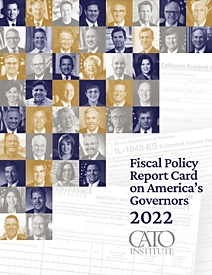The Cato Institute is pleased to welcome Iowa governor Kim Reynolds this Friday, February 10, from 11 AM–noon for a panel discussion with Chris Edwards, Kilts Family Chair in Fiscal Studies and primary author of the Fiscal Policy Report Card on America’s Governors, and Neal McCluskey, the director of Cato’s Center for Educational Freedom.
Governor Reynolds received the highest score on the Report Card in 2022. She has been a lean budgeter and dedicated tax reformer since entering office in 2017. She slashed the Iowa corporate income tax from 9.8 percent to 5.5 percent, and she transformed the individual income tax from a nine‐bracket system with a top rate of 8.98 percent to a 3.9 percent flat tax.
Edwards and the governor will cover the importance of tax reform in today’s competitive economy and the challenges of restraining spending, and balancing an annual state budget. McCluskey and the governor will discuss education policy and school choice.
Luncheon to follow






